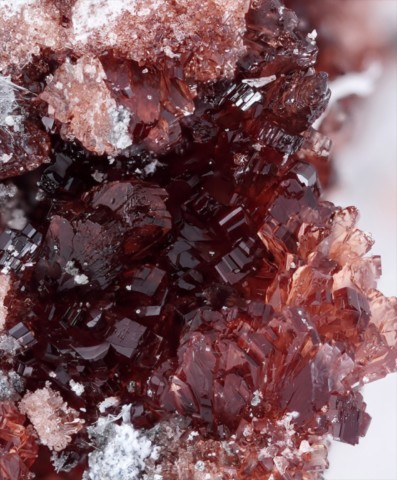RÖMERITE
Class : Sulfates, chromates, molybdates
Subclass : Hydrated sulfates
Crystal system : Triclinic
Chemistry : Fe3(SO4)4 14H2O
Rarity : Rare to uncommon
Römerite (or roemerite) is a relatively uncommon ferrous (Fe2+) and ferric (Fe3+) iron sulfate formed by the alteration of iron sulfides in an arid climate. It is part of a classic mineralogical procession to which other iron sulfates (copiapite, voltaite, jarosite, amarantite, botryogen, fibroferrite, etc...) commonly belong, resulting like it from precipitation from "natural" sulfuric acid formed by the reaction of surface water with iron sulfides. By changing the environmental conditions (temperature, pH, oxidation-reduction potential) these sulfates are easily hydrolyzed into ferric hydroxides (goethite and limonite). It was named in honor of the German geologist Friedrich Adolph Roemer. Römerite occurs in thick pseudocubic or tabular crystals, often agglomerated, sometimes in stalactites, of brown to yellow or purplish color.
Main photo : Römerite from Vieux Travaux, St-Laurent-le-Minier, Gard, France © Yannick Vessely
Römerite in the World
Twinning
No twinning known for this mineral species.
Fakes and treatments
No fakes listed for this mineral species.
Hardness : 3 to 3.5
Density : 2.17
Fracture : Irregular
Streak : Undetermined
TP : Translucent
RI : 1.519 to 1.583
Birefringence : 0.061
Optical character : Biaxial -
Pleochroism : Visible
Fluorescence : None
Solubility : -
Magnetism : NoneRadioactivity : None





